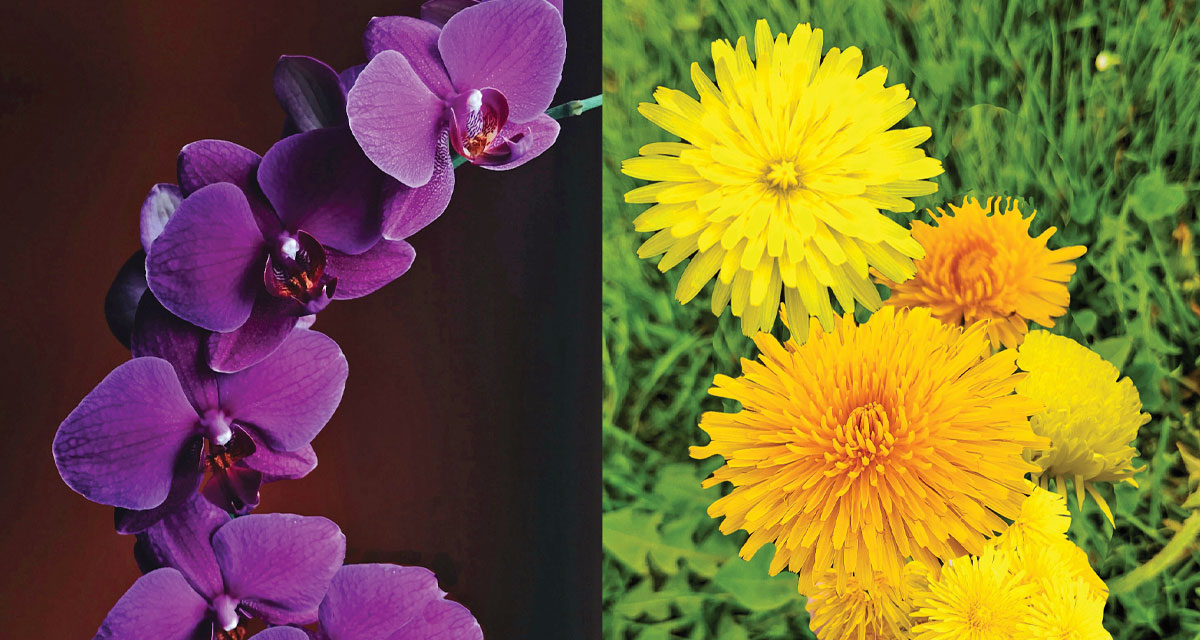Spring has arrived and flowers are in bloom. Two flowers, in particular, interest me for this story. First, the delicate orchid. It has to be meticulously cared for to survive and thrive. If so, it blooms into one of the most magnificent flowers on the spectrum, sought after for its beauty and valued for its rare elegance. The second is the dandelion, a wildflower that seems to grow just about anywhere. No special care or treatment is needed and yet it thrives and multiplies by the thousands. Though its beauty is measured on a different scale, in the appropriate setting, it can be quite majestic, covering the surface of a giant field or pasture in bright yellow.
On this occasion, however, these two flowers are used as metaphors to compare two different types of children. Thomas Boyce, a pediatrician and chief of the division of developmental medicine at the University of California, San Francisco, in his book, The Orchid and The Dandelion: Why Some Children Struggle and How All Can Thrive, uses these two terms to explain an interesting theory. He identifies two personality types in children that stand out. It’s based on his study that included 338 kindergarten children in the United States. They were ages 5 and 6, and their reactions were measured after they were subjected to mildly stressful tasks, such as interviews with strangers, small mental challenge exercises, and varying methods of correcting their mistakes. Their heart rates, cortisol (stress hormone) levels, among other things, were measured before and after to determine the effect. Also, they factored in the parents’ financial stress, marital relationship (good and bad), and parental styles, among other factors.
What they discovered were two very distinct types of response. The first was referred to as orchid children. He characterizes them as “more sensitive to both good and bad environments, biologically reactive to their circumstances, and [who] find it difficult to cope with stress. They are often remarkable in talent and skill.” It’s interesting that not only are they impacted psychologically and emotionally, but physically as well, in how their bodies react to their environment and experiences. He found they were more susceptible to severe respiratory disease, pneumonia, and asthma, among other conditions. In addition, rates of anxiety and depression were higher among this group. Much like the orchid flower, these children thrived in positive, nurturing environments. Equally, they floundered more profoundly in non-supportive and threatening environments. Their immune systems were overworked due to their inability to handle additional stress reactions more appropriately, leading to more exaggerated physical responses to illness. They were also more at risk later on to hypertension, high blood pressure, and cardiovascular conditions.
Conversely, in the second group, referred to as “dandelion children,” he found them to be “resilient, [to] constitute the majority of the children in the study, and like the dandelion, [able] to grow virtually anywhere.” Their ability to manage the same challenging conditions, situations, and events was much stronger and pronounced. He also found their biological responses were unaffected by the various stimuli, suggesting the long-term impact of negative environmental conditions on their physical health was less of an issue.
Of course, both groups thrived in positive conditions, however, the study indicated dandelion children were much less influenced in the long-term, both psychologically and physically, by adverse or negative events and environments.
A word of caution. I recommend not jumping to any rash conclusions without further investigation your personal situation. For example, do not assume just because your child is a gifted athlete, musician, or mathematician, they are automatically in the orchid category. Just the same, if your child is more psychologically resilient, it doesn’t absolutely confirm they are a dandelion. There are numerous concurrent factors involved that in combination could “suggest” this theory, but it’s not a guarantee. It is, however, food for thought and provides valuable insight into two distinct characteristics of behavior and personality in children. This is information that could lead to changes in how we relate to each other and further our understanding of why things happen the way they do.
Parenting is a complex world to enter, and one of life’s biggest challenges. The more information we have and the more aware we are of it, the better our chances of providing a proper, stable, loving, caring, and growing environment for children to dwell in. We all know… parenting is a life-long learning adventure.
To comment and see more, visit theviewfrommysection.com.



















